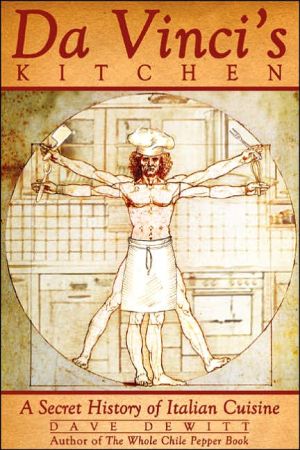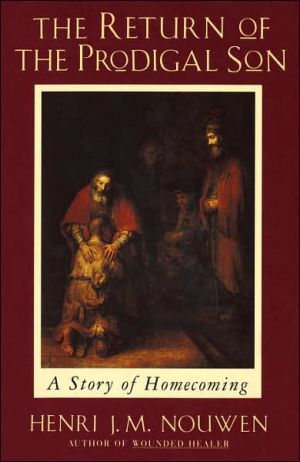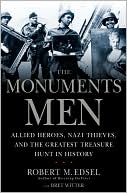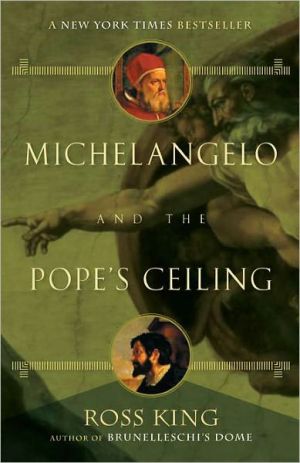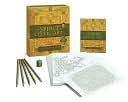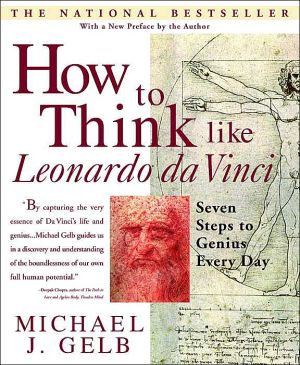Da Vinci's Kitchen: A Secret History of Italian Cuisine
Part history, part biography, and part cookbook, this fascinating exploration of an as-yet unexamined facet of Leonardo da Vinci's life focuses on what and how he ate. Da Vinci lived to be 67—nearly twice the average life span at the time—and his longevity may well have been due to his diet, which is reconstructed here complete with his notes on ingredients, portions, cooking, drinking, and kitchen inventions. The great artist, scientist, and inventor was no slouch in the kitchen, having...
Search in google:
Part history, part biography, and part cookbook, this fascinating exploration of an as-yet unexamined facet of Leonardo da Vinci's life focuses on what and how he ate. Da Vinci lived to be 67—nearly twice the average life span at the time—and his longevity may well have been due to his diet, which is reconstructed here complete with his notes on ingredients, portions, cooking, drinking, and kitchen inventions. The great artist, scientist, and inventor was no slouch in the kitchen, having worked as a kind of theatrical caterer, producing feasts with extravagant menus for royalty. This book unlocks his cooking code and the food history of his day, bringing 30 recipes up to date, including da Vinci's own salad dressing and an exotic saffron risotto with duck and mushrooms fit for a Medici.Publishers WeeklyThough it seems the title of this book is a bid to profit by association with a certain global bestseller-the topic of "Leonardo's Larder" takes up just one chapter-it's easy to forgive this well-researched history, a fascinating look into the eating habits of 15th- and 16th-century Italy. Delving into formal feasts, foreign crops and the Arabic influence on Italian cooking, Dewitt (The Whole Chile Pepper Book) also includes chapters on "The First Superstar Chefs" and what your seat says about you: "honored guests [were] seated with their backs to the fire... it was an exercise in social standing... governed by strict protocol." The author liberally quotes Renaissance food authorities like Bartolomeo Platina, an early librarian at the Vatican who wrote what is likely the first printed cookbook. He also references modern food scholars like Waverley Root and Odile Redon, and includes historical recipes for Renaissance favorites like Risi e Bisi and Spinach Soup with Hazelnuts. Detailed and passionate, this book is unlikely to appeal to a broad audience, but for foodies who want an in-depth exploration of the roots of Italian cuisine, one can hardly go wrong here. (Jan.)Copyright 2007 Reed Business Information
\ Publishers WeeklyThough it seems the title of this book is a bid to profit by association with a certain global bestseller-the topic of "Leonardo's Larder" takes up just one chapter-it's easy to forgive this well-researched history, a fascinating look into the eating habits of 15th- and 16th-century Italy. Delving into formal feasts, foreign crops and the Arabic influence on Italian cooking, Dewitt (The Whole Chile Pepper Book) also includes chapters on "The First Superstar Chefs" and what your seat says about you: "honored guests [were] seated with their backs to the fire... it was an exercise in social standing... governed by strict protocol." The author liberally quotes Renaissance food authorities like Bartolomeo Platina, an early librarian at the Vatican who wrote what is likely the first printed cookbook. He also references modern food scholars like Waverley Root and Odile Redon, and includes historical recipes for Renaissance favorites like Risi e Bisi and Spinach Soup with Hazelnuts. Detailed and passionate, this book is unlikely to appeal to a broad audience, but for foodies who want an in-depth exploration of the roots of Italian cuisine, one can hardly go wrong here. (Jan.)\ Copyright 2007 Reed Business Information\ \ \ \ \ Library JournalUsing the life and times of Leonardo da Vinci as a backdrop, Dewitt (The Whole Chile Pepper Book) has crafted a wonderfully rich and personal look at the food and history of Renaissance Italy. Unable to uncover anything about the famous inventor's eating habits in a variety of biographies, Dewitt decided to examine da Vinci's notebooks himself to uncover what he cooked and ate. Interestingly, he explains that da Vinci became a vegetarian, a dangerous lifestyle choice for the time. The author does not ignore the peasants and details their day-to-day food habits as well. One of the book's most interesting portions is the discussion on the introduction of foreign foods. For instance, the tomato was not brought into Italian cooking until after 1500. Well documented and written, this book also includes recipes at the end of each chapter—even a recipe for da Vinci's salad dressing. Overall, this is a highly enjoyable, informative, and fun read. Recommended for all libraries.\ —Lisa A. Ennis\ \
